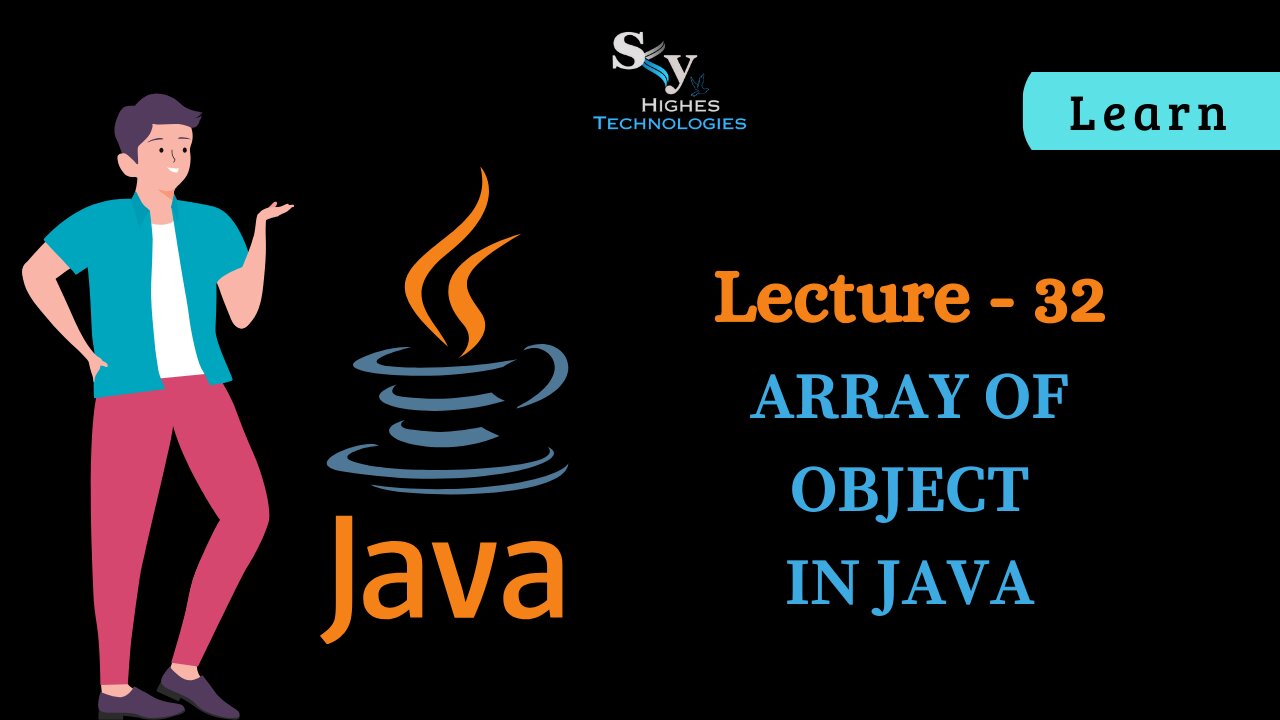Premium Only Content

#32 Array of Object in JAVA | Skyhiges | Lecture 32
Here's a comprehensive explanation of arrays of objects in Java:
Storing Objects in Arrays:
While arrays typically store primitive data types, Java also allows you to store objects.
This enables you to manage collections of objects with similar properties and behaviors, using convenient array features.
Creating an Array of Objects:
Declare the array using the class name:
Java
Employee[] employees = new Employee[5]; // Declares an array that can hold 5 Employee objects
Use code with caution. Learn more
Instantiate each object individually:
Java
employees[0] = new Employee("John", "Doe", 25);
employees[1] = new Employee("Jane", "Smith", 30);
Use code with caution. Learn more
Accessing Object Members:
Use the array index to access the object, then the dot notation to access its members:
Java
System.out.println(employees[0].getName()); // Prints "John"
employees[1].setAge(35); // Updates the age of the second employee
Use code with caution. Learn more
Key Points:
Arrays store references to objects, not the objects themselves.
Each object in the array is independent, with its own state and behavior.
Modifying an object in the array doesn't affect other objects in the array.
Benefits of Using Arrays of Objects:
Organize similar objects: Group objects of the same type for efficient management.
Iterate and process collections: Use loops to apply operations to all objects in the array.
Pass as arguments and return values: Pass entire arrays to methods or return them as results.
Create multidimensional arrays: Store matrices or grids of objects for complex data structures.
Example:
Java
class Employee {
private String name;
private String role;
private int age;
// Constructor and getters/setters omitted for brevity
}
// Create an array of Employee objects
Employee[] team = new Employee[3];
team[0] = new Employee("Alice", "Developer", 32);
team[1] = new Employee("Bob", "Manager", 45);
team[2] = new Employee("Charlie", "Designer", 28);
// Print the names of all employees
for (Employee emp : team) {
System.out.println(emp.getName());
}
Use code with caution. Learn more
Remember:
Choose arrays of objects when you need to manage a collection of similar objects with a fixed size.
For dynamic collections with more flexibility, consider using lists or other Java Collections Framework classes.
-
 1:01:40
1:01:40
HotZone
6 days ago $11.36 earned"Prepare for WAR" - Confronting the URGENT Threat to America
78.2K18 -
 20:23
20:23
Scammer Payback
13 hours agoTerrifying Scammers with File Deletions
45.6K13 -
 16:22
16:22
The Gun Collective
9 hours agoWOW! 17 New Guns JUST GOT RELEASED!
59K11 -
 1:13:57
1:13:57
Glenn Greenwald
10 hours agoYoung Men and Online Radicalization: Dissecting Internet Subcultures with Lee Fang, Katherine Dee, and Evan Barker | SYSTEM UPDATE #516
189K76 -
 1:14:57
1:14:57
Sarah Westall
7 hours agoCEO of Crowds on Demand: The Fake World of Social Media, Protests & Movements w/ Adam Swart
72.3K11 -
 4:03:25
4:03:25
Geeks + Gamers
10 hours agoTuesday Night's Main Event
83.5K2 -
 40:36
40:36
RiftTV
9 hours agoHow We Got 400 Leftists FIRED for MOCKING Charlie Kirk | The Rift | Guest: Olivia Krolczyk
81.7K65 -
 1:28:58
1:28:58
Badlands Media
23 hours agoBadlands Story Hour Ep 134: Godzilla Minus One
49.9K8 -
 1:33:43
1:33:43
Patriots With Grit
18 hours agoWrongful Death Without Consequences: Inside the Schara Trial | Scott Schara
26.6K1 -
 13:09:25
13:09:25
LFA TV
21 hours agoLFA TV ALL DAY STREAM - TUESDAY 9/16/25
246K49